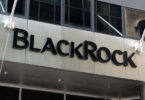Highlights:
- JP Morgan is in production on the Partior multibank network
- Few banks are currently live on Partior
- Partior is for correspondent banking
- JP Morgan is the only U.S. bank to be allowed to use a blockchain interbank network
JP Morgan’s main claim to fame with tokenized money is its JPM Coin blockchain-based bank account. However, JPM Coin only enables digital cash movements between JP Morgan bank accounts. Now JP Morgan is live on Partior, the Singapore-based interbank payment network that uses blockchain.
Partior was cofounded by JP Morgan alongside DBS Bank, Temasek and Standard Chartered. In May JP Morgan received approval to use Partior from the United States’ Office of the Comptroller of the Currency (OCC).
Other U.S. banks have offered single bank blockchain accounts similar to JPM Coin. They include the now defunct Silvergate and Signature banks. However, to our knowledge no other U.S. bank has been allowed to participate in an interbank blockchain payment system that’s in production.
Partior is designed as a multi bank, multi currency system for wholesale use, with each bank controlling its own node.
One of JPM Coin’s key benefits is enabling large corporates to move cash around the world between their JP Morgan accounts, instantly and 24/7. Another is programmability. Partior can provide similar advantages but between banks.
However, a network is only as powerful as the number of banks that are using it, and Partior is still in its infancy. We believe that DBS Bank is live on the platform but Standard Chartered is not yet. Standard Chartered was not able to comment and DBS and Partior did not respond to our queries in time for publication.
Partior preserves the correspondent banking system
A key benefit of digital currency is the ability to make direct payments without intermediaries. With conventional payments, banks that send payments internationally need to hold local currency accounts, Nostro accounts, at banks spotted around the world. Otherwise, they need to go via intermediaries or so-called correspondent banks. Correspondent banking adds cost and friction.
Partior is designed to preserve that system. It is a network of big settlement banks that use Partior to provide correspondent banking services to other banks. What it enables is faster, automated transactions.
However, once they provide correspondent banking services, the Partior settlement banks need to settle amongst themselves and they do so in a conventional manner. This became clear from a presentation to the European Central Bank that stated, “Currently the ‘settlement banks’ do not themselves exchange funds as there is no wholesale settlement mechanism on the Partior platform.”
That’s not to say Partior doesn’t provide value. Improving the speed of correspondent banking services is a highly beneficial offering. It’s just more of an evolution rather than a revolution.
The head of the BIS recently gave the rallying cry for the banking sector to move on from patches and upgrades to replacements – a quantum leap. However, that might impact existing revenue sources such as from correspondent banking.
Apart from cross border payments, Partior is also moving into FX settlement. There are around $7.5 trillion in FX transactions daily. However, a large proportion of those transactions are exposed to settlement risk. For three countries – the UK, Hong Kong and Singapore – the exposed settlements exceed the capital of the countries’ banks. Enabling cross currency atomic settlement known as FX payment versus payment (PvP) can help to address these risks. Outside Partior, HSBC and Wells Fargo have already made significant headway there.
Other U.S. banks blocked from blockchain interbank networks
Meanwhile, JPM Coin launched two years ago when the regulatory environment in the United States was a little more relaxed. Hence, it was a big accomplishment to get the green light to use Partior from the Office of the Comptroller of the Currency (OCC) in May, as Ledger Insights exclusively reported.
Other U.S.-based tokenized deposit networks have faced a tougher time. For example, the USDF Consortium has made significant adaptations to address regulator concerns. It transitioned from a public to private blockchain network, although the public network version always planned to have permissioned elements. Plus it pivoted from a client facing offering to wholesale only access. Nonetheless, like others, it is yet to receive approval for banks to participate in a production environment.
The U.S. interbank blockchain networks mainly have small to medium sized member banks. Looking at it from the OCC’s perspective, perhaps they see smaller banks as less capable of handling the risks and enhanced oversight of this new technology.
However, it would be questionable to conflate the demise of Silvergate and Signature with interbank payments. Those two banks suffered from a dependence on crypto deposits which is a separate issue.
On the other hand, allowing only larger banks to participate in blockchain interbank networks could provide an additional competitive advantage to banks that are so large they are already too big to fail. One of the advantages of smaller banks should be that they’re more nimble. That’s if they are allowed to be.






